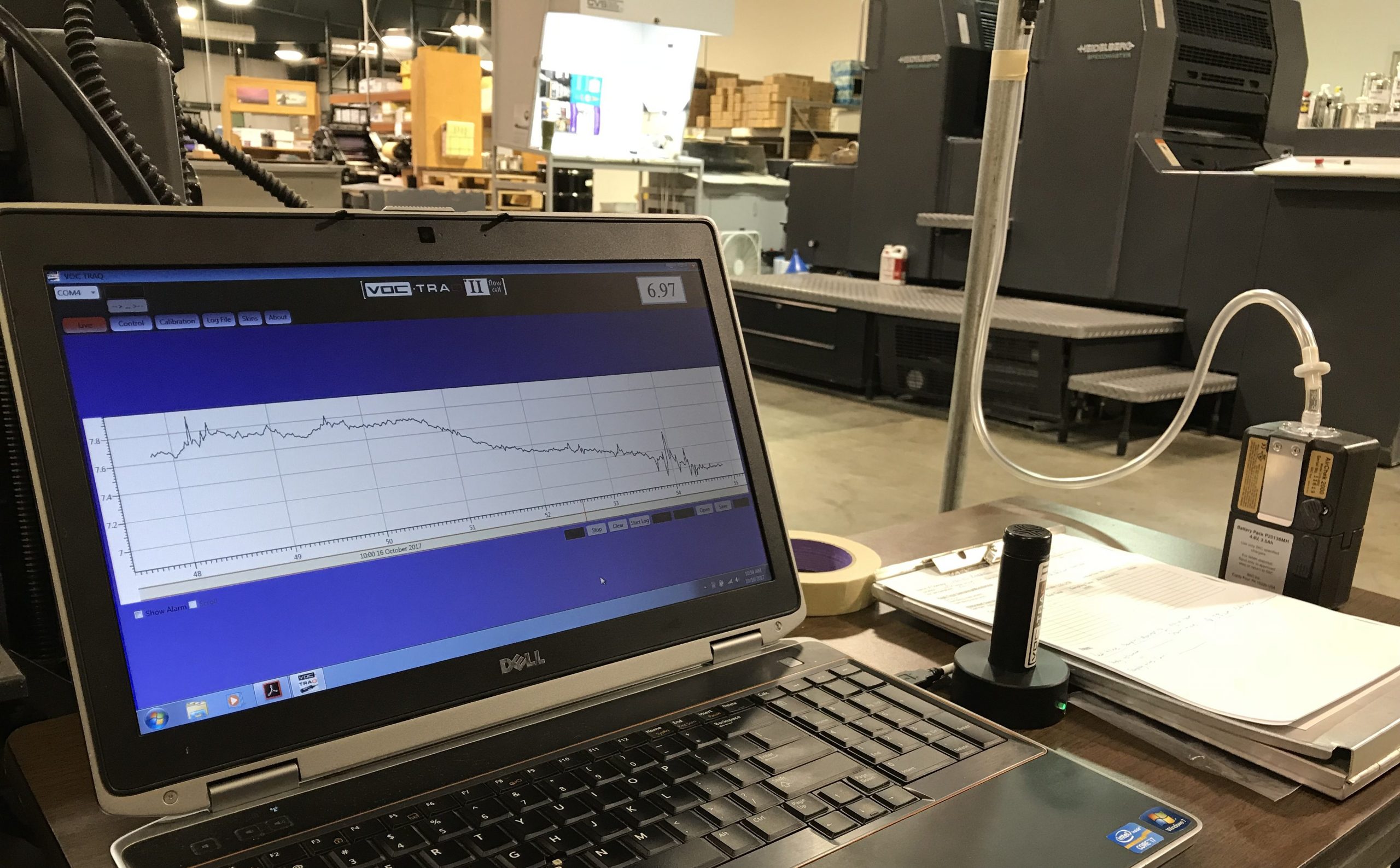Reese K*, Tebehaevu O and Balanay JG (2020). Volatile Organic Compound Emission in a University Printing Press Facility in Eastern North Carolina. Indoor and Built Environment
(epub ahead of print January 7, 2020). doi:10.1177/1420326X19896840
Abstract
Printing presses are known to release volatile organic compounds (VOCs) that may pose health risks to workers. The purpose of this study was to assess the area airborne total volatile organic compounds (TVOCs) and toluene concentrations in an eastern North Carolina university printing facility. Real-time TVOC concentrations for ∼8 h were measured using photoionization detectors during each sampling day in the facility offset and digital printing areas. Air samples were collected in the offset printing area using activated charcoal tubes to determine the 8-h time-weighted-average toluene exposure. The mean daily TVOC concentrations (n = 38) had an overall average of 6.68 ± 3.25 ppm. The mean daily TVOC concentrations in the offset printing area (8.99 ± 2.93 ppm) were significantly higher (p <0.01) than that in the digital printing area (4.38 ± 1.38 ppm), which may be attributed to the type of printing equipment used. The highest mean daily TVOC concentration (15.77 ± 5.69 ppm) and the maximum 1-s TVOC level (42.59 ppm) were measured in the offset printing area. The overall mean toluene concentration (n = 9) was 0.14 ± 0.10 ppm (range of 0.04–0.31 ppm). Findings of this study will help in further understanding the offset and digital printing TVOC exposures and in planning to improve worker protection in printing and other similar industries.
*Kellyn Reese is a graduate of the BS Public Health program with a minor in Environmental Health.

